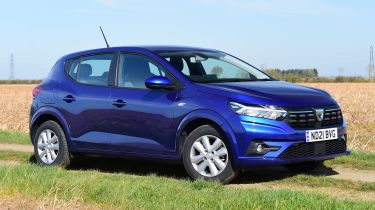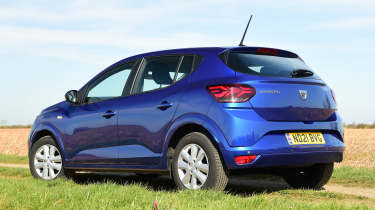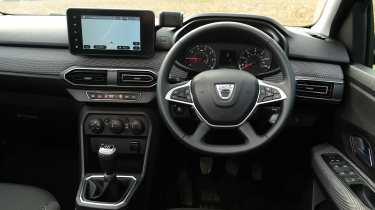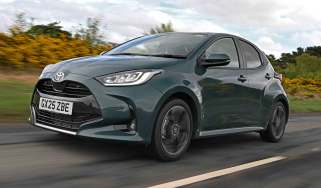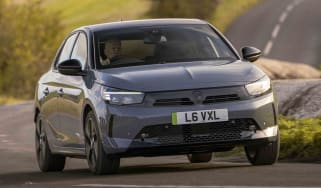Used Dacia Sandero (Mk3, 2020-date) review: all the essentials at a low price
A full used review on the Dacia Sandero covering the Sandero Mk3 that's been on sale since 2020
Verdict
When the Dacia Sandero was launched in the UK, it was the UK’s cheapest new car, and the same was true for the Mk3 when that arrived eight years later. The brand has moved upmarket since then because buyers weren’t interested in poverty-spec entry-level models; instead they just wanted a great-value car that was well equipped. The result is a five-door hatchback that has everything you need but little in the way of luxury, while safety kit that you can take for granted elsewhere, isn’t even an option on the Sandero. For some buyers this is a big deal, while others like not having interfering electronics, so before buying download the full report from Euro NCAP at tinyurl.com/558tmexz to see which camp you’re in.
Everybody loves a bargain, but British new-car buyers are generally in love with premium brands, so when Renault introduced its cut-price car marque to the UK in 2013, nobody was quite sure which way it would go. It was either going to go stratospheric or be a terrible failure, and thankfully for Dacia it was a massive hit.
Since then the Romanian brand has gone from strength to strength across Europe, including in the UK, with around
a quarter of a million cars sold here in little more than a decade. Leading the charge is the Sandero, which is especially popular in higher-riding Stepway form. It beat the Citroen C3 in a 2023 twin test, and as a used buy there are lots of other superminis that it’s capable of toppling.
History
The Sandero Mk2 was part of Dacia’s launch line-up back in 2013; an all-new Mk3 edition reached UK showrooms in April 2021. There was a choice of three different 999cc three-cylinder petrol engines: the 64bhp non-turbo SCe 65, then the 89bhp (TCe 90) and 99bhp (TCe 100) turbo options. The TCe 100 was a bi-fuel unit and in LPG mode it was more powerful (99bhp vs 89bhp) and produced lower CO2 emissions, but it was also much thirstier.
Just over a year after the Sandero Mk3 arrived, the SCe 65 edition was axed because of poor sales, leaving the turbocharged models only. Introduced alongside the regular Sandero was a Stepway edition, which was identical aside from the addition of body cladding, roof bars and a ride height raised by 39mm.
Which one should I buy?
If most of your driving is only going to take place locally, then the SCe 90 is all you really need, but the TCe turbo engines are much nippier, and you’ll need one of these if you go on the motorway or load up with passengers regularly. The manual gearbox is better to use than the auto, and entry-level (Access) cars are best avoided, even though they’re not as basic as you might think.
Standard kit includes electric front windows, steel wheels, manual door mirror adjustment, and a trip computer, but no audio system. The Essential brings audio with DAB, Bluetooth and a multifunction steering wheel, along with cruise control, air-con and remote central locking.
Used - available now

2015 Dacia
Sandero
49,000 milesManualPetrol0.9L
Cash £4,895
2022 Dacia
Sandero
64,169 milesManualPetrol-lpg1.0L
Cash £7,350
2024 Dacia
Sandero
19,417 milesManualPetrol1.0L
Cash £9,290
2022 Dacia
Sandero
14,495 milesManualPetrol-lpg1.0L
Cash £9,417The range-topping Comfort trim also has powered door mirrors, electric rear windows, rear parking sensors and a camera, plus automatic wipers.
Alternatives to the Dacia Sandero
There are plenty of alternatives, but you’ll invariably be buying something older and higher-mileage for a given budget.
One of our favourite superminis is the Ford Fiesta, which also came in pseudo-SUV Active form, like the Sandero. Or you could try the Renault Clio, which shares a lot with the Dacia supermini and is one of our favourite small cars.
The SEAT Ibiza and Skoda Fabia sit on the same platform and are great used buys with their smart looks and user-friendly cabins. The Peugeot 208, Citroen C3 and Vauxhall Corsa are closely related, and the same is true of the Kia Rio and the Hyundai i20. All of these are worth considering, and so is the more left-field Suzuki Swift.
What to look for
Spare wheel
All Sanderos came with a tyre repair kit rather than a spare wheel. A space- saver was optional with all trims.
Kit
Some of the safety equipment that’s missing from the Dacia Sandero includes various airbags, lane-keep assist and auto braking when in reverse.
Door seals
Check the rear footwells aren’t full of water. A couple of owners have reported deformed door seals, but this isn’t a common problem.
Creaks
The Sandero’s build quality is pretty good, but rattles can crop up from behind the dashboard, as well as from the front door-lock mechanisms.
Interior
The Sandero’s cabin isn’t luxurious, but it’s less spartan than you might expect (entry-level models aside), even if equipment that you take for granted elsewhere, isn’t available even as an option. Head and legroom are good in the back, but comfy only for two unless the three rear passengers are children.
Access cars have a single-piece folding rear seat and a height-adjustable steering, but Essential and Comfort editions have a 60:40 split-folding back rest and add reach adjustment for the steering wheel. The boot can stow 328 litres with the back seats in use, or 1,108 litres with the back rests folded.
Prices
Most Sanderos for sale are Stepway editions. The SCe 65 is the most affordable Sandero, while the TCe 90 is by far the most common edition.
To check prices on a specific model head over to our valuation tool.
Running costs
All Sanderos need to be serviced every 12 months or 18,000 miles, with the schedule alternating between Minor and Major. These cost £175 and £270, but for high-mileage drivers they can be combined for £370. The Minor service is a vehicle check and a fresh cabin filter; the Major includes an oil and filter change.
The brake fluid needs to be replaced every three years (at £85), and the spark plugs along with the air filter every fourth service (£135 and £45), while the coolant should be renewed every five years for £165. The three-cylinder petrol engine doesn’t have a cambelt, but LPG-powered models have two filters which need to be replaced. The first one lasts for 18,000 miles and costs £110 to replace; the other has to be renewed every 36,000 miles at a cost of £125.
Recalls
While the original Sandero was recalled on six occasions, including twice because of airbag glitches, so far Dacia has recalled the Mk 2 Sandero just once.
The campaign was launched in October 2021 and it affected 572 examples of the Sandero built up to September 2021. The problem was down to a fuel- supply hose not being correctly fitted on the production line, and the potential result was fuel leaks in the engine bay. Any cars found to be faulty were fitted with a new fuel-supply hose.
If you’re unsure whether or not any Dacia you’re thinking of buying is subject to any recalls, log on to dacia.co.uk/recall-campaigns.html and enter the car’s VIN (chassis number). If work is needed, it’ll be flagged up and any official dealer will repair it for free.
Driver Power owner satisfaction
Despite the Sandero being Dacia’s biggest-selling model, the second-generation car hasn’t appeared in our Driver Power new-car surveys, although the Duster has. That model managed 14th out of 75 entries in 2022, then an even more impressive fourth the following year. Unfortunately, Dacia doesn’t do so well in our annual brands’ survey, though; it came 26th out of 32 last year, and 27th out of 29 in 2022.

